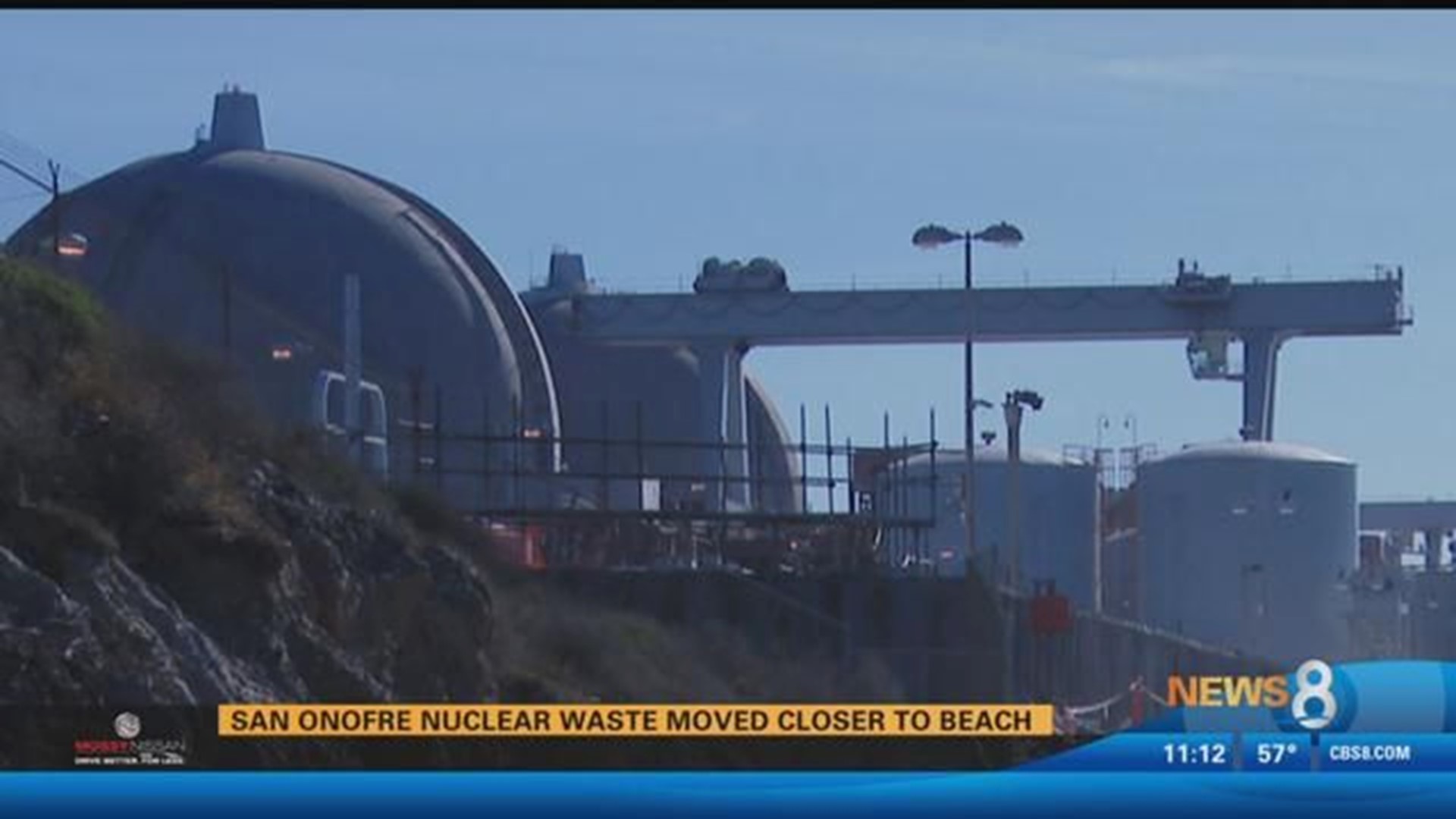SAN ONOFRE, Calif. (NEWS 8) -- Millions of pounds of nuclear waste is being moved closer to the ocean at the closed-down San Onofre Nuclear Generating Station.
News 8 recorded video at San Onofre State Beach on the morning of January 31, the first day workers started moving canisters full of spent fuel rods to dry storage at the nuclear power plant.
We were met by armed security guards on the public beach.
“You guys are at your own risk being in this area. It’s your own risk, radiation risk,” one unidentified guard warned.
From the fence line, the video shows a huge crane used to transport stainless steel canisters filled with highly-radioactive waste.
The dry storage area is about 100 feet from the beach.
“What you're looking at are 73 silos that are going to hold very large cans filled with very heavy nuclear waste,” explained Charles Langley, the executive director of Public Watchdogs.
The group opposes the waste move near the beach.
Once stored in pools of cold water inside the plant, the hot fuel rods will now be kept outside in silos protected by a cement bunker.
“If you look at this, you can see that it's 108 feet from the water. The one thing you don't do is put nuclear waste close to the water,” said Langley.
The canisters are welded shut before the move. It will take more than a year to slowly relocate all of them – one by one – into the silos.
Opponents worry the canisters will eventually corrode and crack in the salt air. And, if water gets inside, they say, a meltdown could result.
“These cans are literally a few feet above the salt water table. They're made of steel. It's good quality stainless steel but it's only about the diameter of dime,” Langley said.
A 28 foot high sea wall protects the San Onofre facility from tidal wave action.
But what about an earthquake or a tsunami?
Scientists say they've studied the risks and there's nothing to worry about.
“I see no scenario by which a tsunami, any plausible tsunami at that location, would result in the release of radioactivity,“ said UCSD professor David Victor.
Victor is the chair of the San Onofre Community Engagement Panel set up by the owners of the plant, Southern California Edison and SDG&E.
He says the plan to store the waste by the beach is temporary until they can find someplace else to put it, perhaps in Texas or New Mexico.
“I would not be at all surprised if in the next 5 to 10 years we started to actually see some shipments,” said Victor.
He said the risk of a canister cracking does not come into play for at least 20 years.
Additionally, the silos will be monitored for corrosion and radioactive release, according to Victor.
“You would never allow a canister to get to the stage of an actual crack while it's in place. So, the monitoring program is in place to make sure you understand the health of the canisters,” he said.
The waste move is expected to be finished by mid-2019. Efforts to find an alternate storage location are still ongoing.
Southern California Edison declined to be interviewed for this report.

